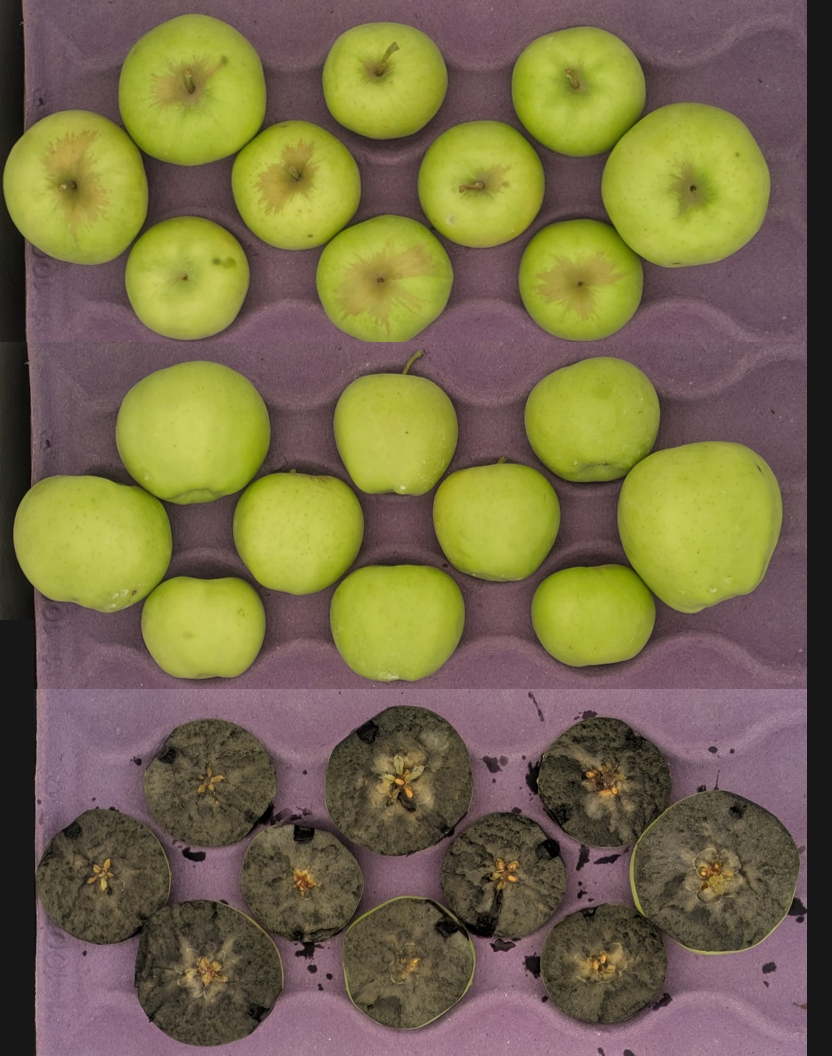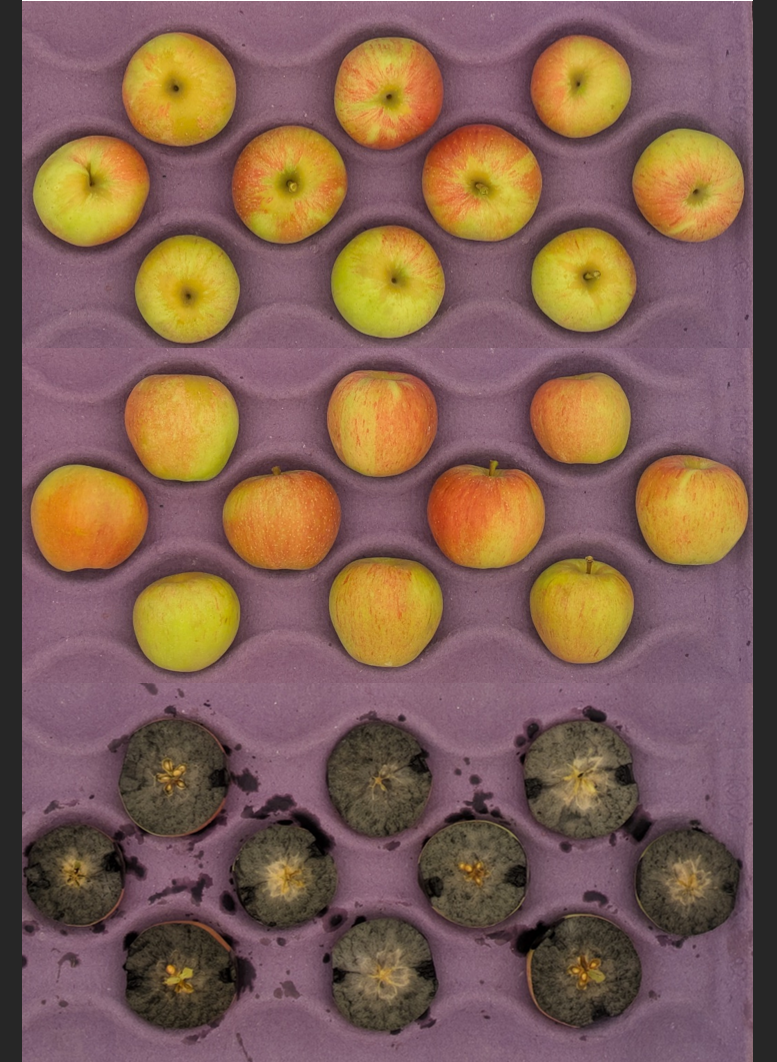2025 Apple Maturity Pilot Program [07.24.2025]
go.ncsu.edu/readext?1083779
en Español / em Português
El inglés es el idioma de control de esta página. En la medida en que haya algún conflicto entre la traducción al inglés y la traducción, el inglés prevalece.
Al hacer clic en el enlace de traducción se activa un servicio de traducción gratuito para convertir la página al español. Al igual que con cualquier traducción por Internet, la conversión no es sensible al contexto y puede que no traduzca el texto en su significado original. NC State Extension no garantiza la exactitud del texto traducido. Por favor, tenga en cuenta que algunas aplicaciones y/o servicios pueden no funcionar como se espera cuando se traducen.
Português
Inglês é o idioma de controle desta página. Na medida que haja algum conflito entre o texto original em Inglês e a tradução, o Inglês prevalece.
Ao clicar no link de tradução, um serviço gratuito de tradução será ativado para converter a página para o Português. Como em qualquer tradução pela internet, a conversão não é sensivel ao contexto e pode não ocorrer a tradução para o significado orginal. O serviço de Extensão da Carolina do Norte (NC State Extension) não garante a exatidão do texto traduzido. Por favor, observe que algumas funções ou serviços podem não funcionar como esperado após a tradução.
English
English is the controlling language of this page. To the extent there is any conflict between the English text and the translation, English controls.
Clicking on the translation link activates a free translation service to convert the page to Spanish. As with any Internet translation, the conversion is not context-sensitive and may not translate the text to its original meaning. NC State Extension does not guarantee the accuracy of the translated text. Please note that some applications and/or services may not function as expected when translated.
Collapse ▲In cooperation with the Henderson County Master Pomology Program, we initiated an effort to monitor apple fruit maturity in commercial orchards in Henderson County, NC. The goal of this program is to provide timely updates regarding fruit maturity of several apple cultivars in the region. Data will be presented weekly to commercial apple growers via web-based updates to partly aid in harvest management decisions. Please note that the data presented is limited to the specific orchard block that we used for sampling. Do not assume that fruit at your location are at the same stage of maturity. To be clear, there is no substitute for regular monitoring of fruit quality parameters at your own operation.
Weekly Update (07.24.2025)
Ginger Gold remains immature at this location in Edneyville, NC. Please note the ~ 2 lb. drop in fruit firmness from the previous week for Ginger Gold (Table 1). Considering the forecast for elevated temperatures over the next ~7 day period, it would not be surprising to observe a meaningful shift in fruit maturity next week for this cultivar. Another concern will be an increased risk of fruit sunburn during this interval.
For Gala, most fruit quality parameters did not change from the previous sampling period. However, we observed a 16% increase in marketable blush coverage from the previous week. It will be interesting to see the impacts of elevated temperatures on Gala fruit quality parameters next week.
Elevated temperatures proximal to harvest can hasten fruit maturity. Also, some fruit maturity indicators (i.e. starch pattern index) are not as reliable under these conditions. I highly recommend reading this excellent extension article by Dr. Randy Beaudry (Michigan State University), for some key pre- and post-harvest considerations for harvesting apples in the heat.
For those that are interested in managing fruit maturity using plant growth regulators (PGRs), caution needs to be exercised during this heat wave. It may be best to avoid using PGRs to manage fruit maturity during this heat wave if at all possible. If this is unavoidable, please consider the following:
- Applying PGRs during the heat of the day is generally not advisable. Apply products when temperatures are cool and when drying conditions are slow (early morning or in the evening).
- Warm temperatures near application and harvest can result in more rapid metabolism of products used to manage fruit maturity. In these situations, close monitoring of fruit maturity is needed to determine if another application is necessary.
- Where an organosilicone surfactant is used (ReTain®), this can result in damage to fruit if heat is excessive. Using the lower rate of organosilicone surfactant (0.05%; 6.4 fl. oz. per 100 gallons) is suggested to minimize risk of injury during periods of heat stress.
- Higher application rates of NAA (>10 ppm) may cause fruit softening at temperatures above 85°F.
If of interest, please see our previous posts for more detailed information on PGRs to manage fruit maturity. Specifically:
- Using PGRs to Manage Apple Preharvest Drop, Fruit Maturity, and Harvest Timing
- Apple Harvest Management Considerations: Special Focus on Gala
Ginger Gold
| Table 1. 2025 ‘Ginger Gold’ fruit quality parameters in Edneyville, NC. | ||||||
| Date |
Fruit Firmness (lbs.) |
Soluble Solids (%) |
Starch pattern (1 to 8 scale) |
Fruit Weight (g) |
Fruit Diameter (inches) |
Marketable Blush (%) |
| July 22 | 18.6 | 10.0 | 1.2 | 205 | 3.15 | 0 |
| July 15 | 20.5 | 10.1 | 1.1 | 166 | 2.91 | 0 |

Figure 1. ‘Ginger Gold’ superficial appearance at the stem-end (top), shoulder (middle), and starch pattern (bottom) on 07.22.2025
‘Simmons’ (Buckeye® Gala)
| Table 1. 2025 ‘Simmons’ (Buckeye® Gala) fruit quality parameters in Edneyville, NC. | ||||||
| Date |
Fruit Firmness (lbs.) |
Soluble Solids (%) |
Starch pattern (1 to 8 scale) |
Fruit Weight (g) |
Fruit Diameter (inches) |
Marketable Blush (%) |
| July 22 | 24.1 | 10.1 | 1.4 | 116 | 2.46 | 18.76 |
| July 15 | 24.5 | 9.4 | 1.3 | 121 | 2.51 | 1.97 |

Figure 2. ‘Gala’ superficial appearance at the stem-end (top), shoulder (middle), and starch pattern (bottom) on 07.22.2025
When should I harvest?
Optimal harvest timing is dictated by multiple factors, especially the intended market. While one size does not fit all, please see this resource from Michigan State University for some general guidelines.
Acknowledgements
We are very grateful for the cooperation of the Pat Lancaster and the team at Grandad’s Apples for hosting this project. Thank you for your generous access to your farm and fruit!
This work would not be possible without my excellent colleague, co-author, and technician, Tatiana Zuber.
We sincerely appreciate the great work of Marvin Owings, Ken Olson, Ivy Olson, Don Schwartz, Gary Medere, John Masotti, Susan Hadden, Adam Ferrell, Bill Metts, and Leigh Siracusano, who make up the Henderson County Master Pomology Program. This dedicated team of volunteers are assisting with data collection and inspired the initiation of this pilot program.


